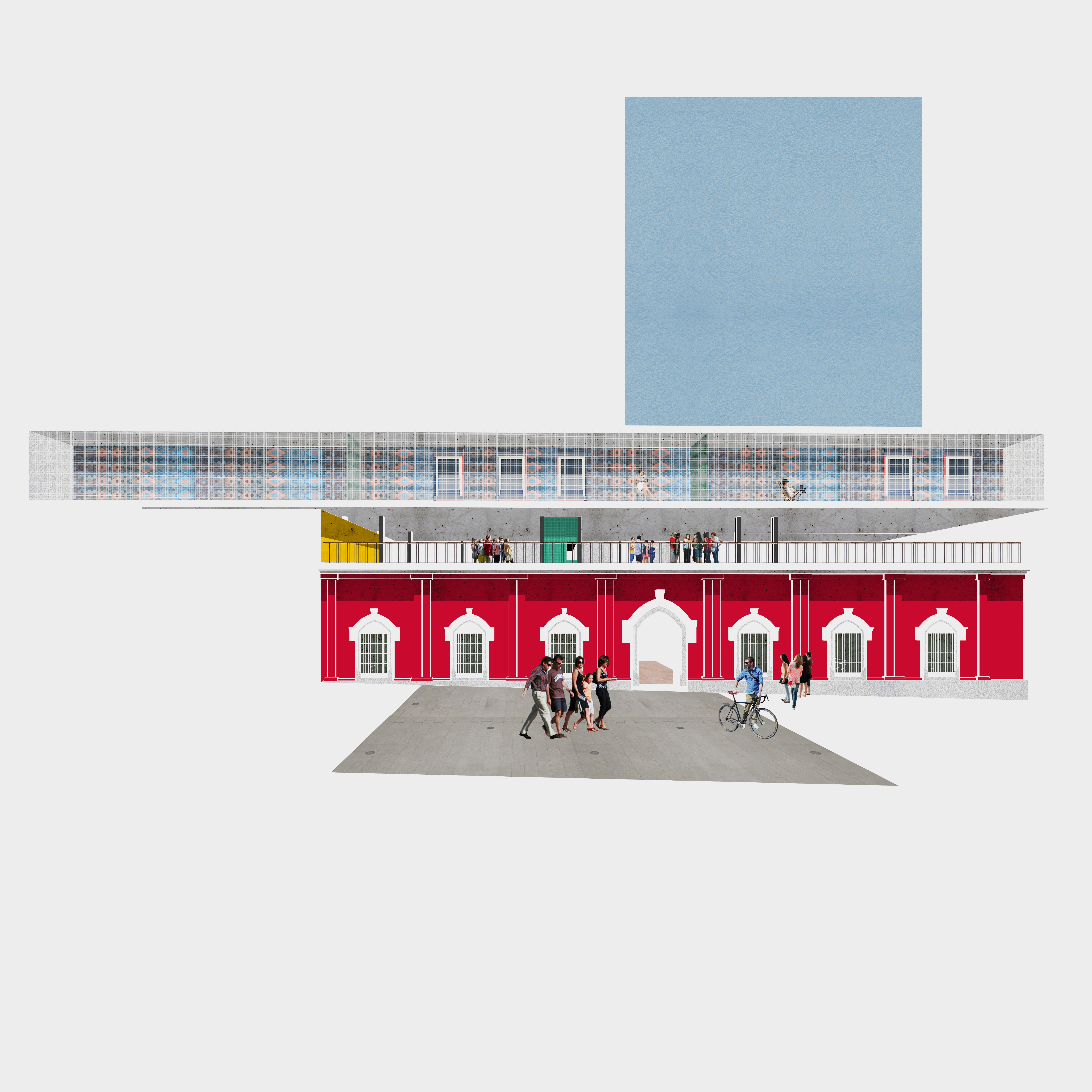该项目通过引入“居住-工作”复合模式,创新了INFONAVIT的商业模式,将雇主重新纳入住房供给的合作体系。
同时,公司作为工人所属的地域性社区,可以成为INFONAVIT的本地协调者。通过重建工人与雇主在住房生产中的联系,有望拉近居住地与工作地的物理距离。
此外,为了打破工人住房在空间布局和人口结构上的固化,该项目将城市的活力融入了居住空间。
The project introduces a "live-work" integrated model, innovating INFONAVIT's business approach by bringing employers back into the housing provision partnership.
At the same time, companies act as regional communities where workers belong, serving as local coordinators for INFONAVIT. By re-establishing the connection between workers and employers in housing production, the project aims to reduce the physical distance between living and working spaces.
Furthermore, to break the rigidity of workers' housing in terms of spatial design and demographic structure, the project integrates urban vitality into the residential spaces.
合作/COLLABORATOR
罗雨翔
Yuxiang Luo
苏曼
Man Su
信息/STATUS
GSD 2015课程设计
GSD 2015 Spring Option Studio_Craft, Politics, and the Production of Housing in Oaxaca, Mexico
指导/Instructor
Daine Davis
Jose Castillo
“我们为INFONAVIT付出了这么多,但他们却没有提供能够真正惠及我们员工的住房!”
"We have paid so much for INFONAVIT, but they are not providing the housing that can benefit our employees!".
![]()
![]()
一家当地制造企业主的批评揭示了墨西哥当前住房开发模式在满足购房者具体本地需求方面的低效与无能。
在墨西哥各大城市广泛应用的住房供给模式,本应链接开发商、INFONAVIT(作为住房抵押贷款机构的联邦工人住房研究所)以及每个购房者,但由于缺乏一个能够在国家层面(INFONAVIT的资金范围)和地方社区(住房是地域性问题)之间起到协调作用的代理机构而宣告失败。这个问题在瓦哈卡进一步恶化,这座城市被称为另一个潜在的“活着的博物馆”,其游客与当地居民的比例为3.82。政府一方面试图推动城市密度提升,另一方面却让市中心的许多服务和基础设施对市民望而却步。
The critique from the owner of a local manufacturing company highlights the inefficiency and inability of Mexico's current housing development model to address the specific local needs of home buyers.
The housing provision model, widely implemented across cities in Mexico and designed to connect developers, INFONAVIT (the federal institute for worker’s housing acting as a mortgage lender), and individual home buyers, has failed due to the absence of an agency capable of mediating between the national scale (INFONAVIT's funding scope) and local communities (housing as a territorial issue). This issue is exacerbated in Oaxaca, a potential "living museum" with a tourist-to-local ratio of 3.82. While the government seeks to increase urban density, many citizens are denied access to essential services and infrastructure in the city center.
![]()
![]()
![]()
在这一过程中,位于公司内部、提供物理空间的庭院,以及连接居住与工作的深厚制造业传统,起到了催化剂的作用。通过将城市密度提升重新定义为社会经济多样化,而非单纯增加建筑容积率,这种“针灸式”的住房补充策略将住宅生活巧妙融入城市,同时保留生活氛围。
In this process, the courtyards, which provide physical spaces within the companies, along with the profound tradition of the manufacturing industry that links living and working, act as catalysts. By redefining densification as socio-economic diversification rather than merely increasing the physical FAR, the strategic "acupuncture" approach to housing additions will integrate residential life into the city while preserving its vibrant living ambiance.
![]()
![]()
![]()
![]()
![]()
![]()
![]()
"We have paid so much for INFONAVIT, but they are not providing the housing that can benefit our employees!".


一家当地制造企业主的批评揭示了墨西哥当前住房开发模式在满足购房者具体本地需求方面的低效与无能。
在墨西哥各大城市广泛应用的住房供给模式,本应链接开发商、INFONAVIT(作为住房抵押贷款机构的联邦工人住房研究所)以及每个购房者,但由于缺乏一个能够在国家层面(INFONAVIT的资金范围)和地方社区(住房是地域性问题)之间起到协调作用的代理机构而宣告失败。这个问题在瓦哈卡进一步恶化,这座城市被称为另一个潜在的“活着的博物馆”,其游客与当地居民的比例为3.82。政府一方面试图推动城市密度提升,另一方面却让市中心的许多服务和基础设施对市民望而却步。
The critique from the owner of a local manufacturing company highlights the inefficiency and inability of Mexico's current housing development model to address the specific local needs of home buyers.
The housing provision model, widely implemented across cities in Mexico and designed to connect developers, INFONAVIT (the federal institute for worker’s housing acting as a mortgage lender), and individual home buyers, has failed due to the absence of an agency capable of mediating between the national scale (INFONAVIT's funding scope) and local communities (housing as a territorial issue). This issue is exacerbated in Oaxaca, a potential "living museum" with a tourist-to-local ratio of 3.82. While the government seeks to increase urban density, many citizens are denied access to essential services and infrastructure in the city center.



在这一过程中,位于公司内部、提供物理空间的庭院,以及连接居住与工作的深厚制造业传统,起到了催化剂的作用。通过将城市密度提升重新定义为社会经济多样化,而非单纯增加建筑容积率,这种“针灸式”的住房补充策略将住宅生活巧妙融入城市,同时保留生活氛围。
In this process, the courtyards, which provide physical spaces within the companies, along with the profound tradition of the manufacturing industry that links living and working, act as catalysts. By redefining densification as socio-economic diversification rather than merely increasing the physical FAR, the strategic "acupuncture" approach to housing additions will integrate residential life into the city while preserving its vibrant living ambiance.






